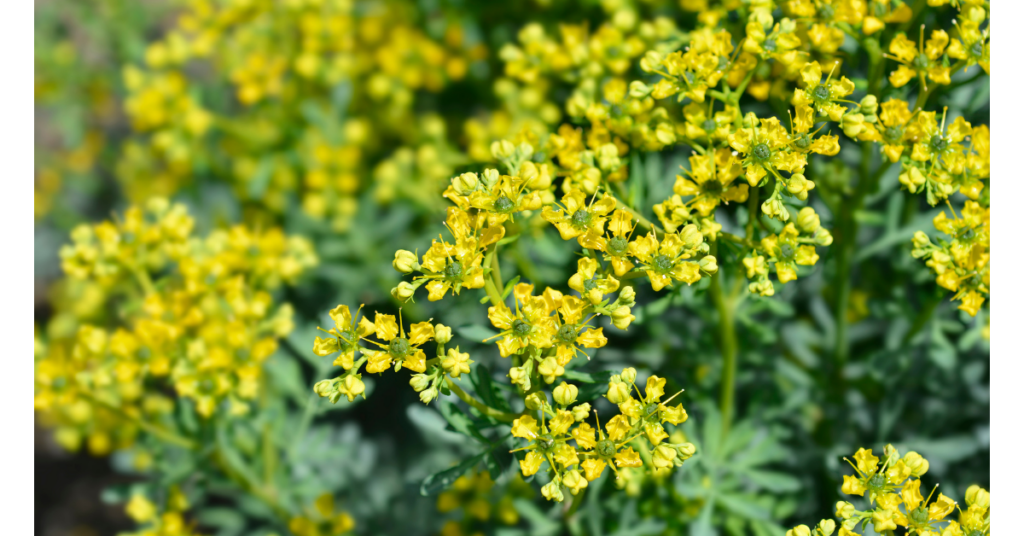Rue – Homeopathic Remedy
Rue (Ruta graveolens)
In days of yore rue was deemed a ‘super herb’ due to its purported powers of protection against the twin ‘evils’ of plague and witchcraft, as well as being the tonic of choice amongst great artists such as Michelangelo, who used it for the procurement of sharper vision.
This herb has been used medicinally for centuries, although large doses should be avoided due to toxic side effects such as vomiting, fits, delirium, and a swollen tongue.
Other names: Garden rue, herbygrass, ave-grace, herb-of-grace, bitter herb.
Description and places it grows in
A hardy, evergreen plant native to southern Europe and introduced to the UK by the Romans. Rue prefers a dry, partially-shaded environment. It produces yellow-green flowers and has a strong, pungent smell bordering on the offensive.
Parts used
The sap from the green parts of the plant prior to flowering.
Uses
Homeopaths may prescribe this remedy for:
Bone and joint injuries / disorders such as synovitis (inflammation of the synovial membranes lining joints), rheumatism, fractures, and dislocations.
Injuries to the tendons, ligaments, and muscles such as strains and sprains displaying the following symptoms: Excruciating deep tearing pain.
Eye strain displaying the following symptoms: Tired, aching eyes; inflammation; redness; headache.
Chest pains displaying the following symptoms: Painful deep coughs.
People requiring this remedy will feel worse: In cold, damp weather; when resting; whilst exercising outside.
People requiring this remedy will feel better: In a warm environment; with gentle movement indoors.
People suitable for this remedy usually suffer from depression and anxiety when ill.
The information given on this site about homeopathic remedies is just a general overview. Classical homeopathy takes all the patient’s symptoms into account and prescribes upon the “Totality of Symptoms”, thus finding the precise remedy that matches the patient’s symptoms perfectly.
Here, at The CMA we recommend that anyone interested in learning more about homeopathy and the fascinating remedies that homeopaths use should take an introduction course to homeopathy, which will help you to understand how to become a good home first-aid prescriber. This is ideal for ‘acute symptoms’. However, if you want to learn more – with a view even to becoming a professional homeopath, who is educated highly enough to be able to treat chronic conditions, you’ll need to be prepared to spend many years learning this vast and fascinating topic – along with anatomy, physiology and pathology, history of medicine, homeopathic philosophy, and much more. You’ll find both kinds of courses here on this site – head to our section on Find a CMA Member and search under CMA Registered Training Schools.

